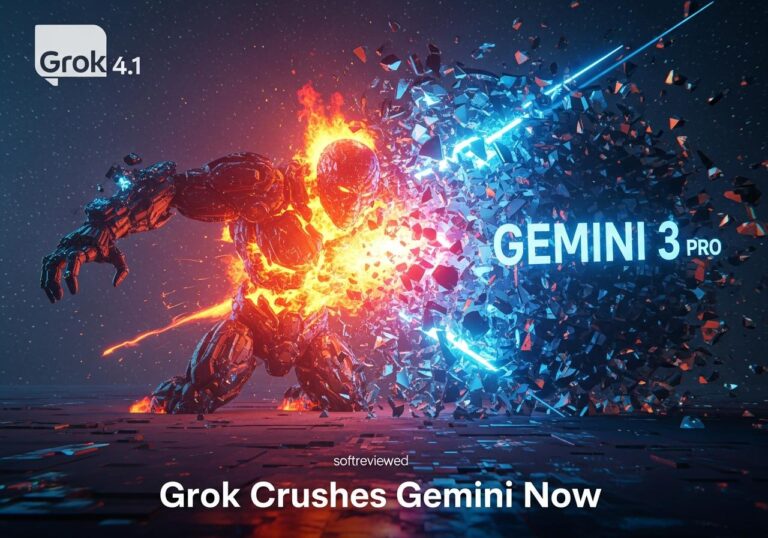Federal vs. State AI Regulation Battle
The struggle between federal preemption and states’ rights to regulate artificial intelligence is intensifying as technology rapidly evolves.
🛑 10-Year Federal Ban Overrides State Laws
The proposed federal moratorium would preempt over 1,000 AI-related state bills, effectively freezing local policymaking for an entire decade. This would create a uniform national approach but potentially leave states unable to address unique local concerns.
⚖️ Bipartisan Opposition from Senators
Both Republican and Democratic lawmakers, including Senators Marsha Blackburn and Josh Hawley, have rejected the preemption approach, citing states’ constitutional rights to address AI risks affecting their citizens. This rare bipartisan agreement highlights concerns about federal overreach.
🔄 Innovation vs. Public Protection Tension
Proponents of federal preemption argue that fragmented state rules stifle technological growth and innovation. Critics warn this approach could leave the public vulnerable to unchecked AI harms including deepfakes, algorithmic discrimination, and accelerated job displacement without local protections.
💰 Tech Industry Funding State Preemption
Silicon Valley companies are actively lobbying for a sweeping ban on state AI regulations, drawing comparisons to Section 230 protections that limit platform liability. This corporate-backed initiative raises questions about whether public or private interests are driving AI policy decisions.
🔍 States Demand Adaptability to AI Threats
State legislators argue that local laws are critical to counter rapidly evolving AI risks tied to algorithmic bias, scams, and community impacts. They emphasize the need for responsive governance that can adapt to technological changes faster than federal frameworks typically allow.
The 10-Year AI State Law Moratorium: A High-Stakes Bet on Federal Control
Artificial Intelligence is transforming our world at an astonishing pace, particularly in software development. We're seeing a surge in tools that can write code, design applications, and even help create entire digital experiences based on simple text prompts. This has given rise to a trend called "vibe coding"—where developers describe what they want, and AI brings it to life. Sounds amazing, right? But there's a catch, a shadowy side to this rapid innovation: vibe-hacking. This emerging phenomenon involves exploiting the very vulnerabilities that can arise from this fast, "vibe-driven" AI code generation, or using AI itself as a sophisticated tool for malicious cyber activities. Get ready, because we're about to explore what vibe-hacking is, how AI-generated code plays a role, and why it's becoming a critical concern in cybersecurity.
What Exactly is This "Vibe-Hacking" Buzz? 🧐
The term "vibe-hacking" might sound like something out of a sci-fi movie, but it's an increasingly real concept in the tech world. It generally refers to two interconnected ideas: exploiting weaknesses in software built with a "just get it done" AI-assisted approach, and the broader use of AI by malicious actors to create and deploy cyber threats.
From "Vibe Coding" to Vulnerability: The Genesis
Let's first touch upon "vibe coding." Imagine telling an AI, "Hey, build me an e-commerce site with a login page and a product catalog," and the AI generates the underlying code. Developers, especially those looking to prototype quickly or those with less coding experience, might rely heavily on Large Language Models (LLMs) to churn out code based on a general feeling or "vibe" of what's needed, rather than meticulously crafting every line with security best practices in mind.
As Intigriti, a bug bounty platform, pointed out in their insightful article, "Finding more vulnerabilities in vibe coded apps," this approach can be a "hacker's dream." Why? Because while the AI-generated code might look functional and even run smoothly, it can hide subtle, and sometimes catastrophic, security flaws. Vibe-hacking, in this context, is the act of identifying and exploiting these AI-induced vulnerabilities. Developers trust the AI, push the code to production, and boom – a potential backdoor is open.
AI as the Hacker's Apprentice: The Broader Scope
But vibe-hacking isn't just about the code AI writes; it's also about how AI can be used to hack. Cybersecurity expert K. Moussouris, as reported by The Deep View, has used the term "vibe hacking" to describe a more general trend of directing AI to solve complex problems—or create them—often without the user fully understanding the intricate workings or potential repercussions.
This means attackers can leverage AI to:
- 📌 Generate convincing phishing emails and messages.
- 📌 Create malicious scripts or malware variants.
- 📌 Automate reconnaissance to find targets.
- 📌 Even orchestrate social engineering campaigns.
Essentially, AI can act as a powerful assistant, lowering the technical skills required to launch sophisticated attacks.
The Digital Wild West: How AI Enables a New Breed of Cyber Threats
The rise of powerful, accessible AI tools is democratizing capabilities that were once the domain of skilled programmers and, unfortunately, skilled hackers. This democratization brings both immense potential for good and significant risks.
"VibeScamming": AI-Crafted Deception on a Massive Scale
One of the most concerning manifestations of AI-assisted malice is what researchers at Guardio Labs have dubbed "VibeScamming." They found that malicious actors can use generative AI to create sophisticated phishing campaigns with minimal effort. Nati Tal, Head of Guardio Labs, highlighted that this technique, inspired by "VibeCoding," allows even novices to launch convincing scam operations without deep coding skills. Their research showed that some AI platforms could be manipulated into generating not just realistic login pages mimicking legitimate services, but also the code for stealing credentials and evading detection. This represents a significant shift, making high-quality scam creation more accessible than ever.
Lowering the Bar: When Anyone Can (Almost) Be a Hacker
The implications are stark. With AI tools, individuals with little to no traditional coding or hacking expertise—sometimes referred to as "vibe hackers"—can prompt AI to generate malicious code or outline attack strategies. As The420.in reported, users can command AI to "solve complex cybersecurity problems—or create them." While AI won't instantly turn a complete novice into a master cybercriminal, it significantly lowers the barrier to entry for creating harmful digital tools and campaigns. It's like giving someone a powerful weapon without requiring them to understand its mechanics or ethical use.
Under the Hood: Why AI-Generated Code Can Be a Hacker's Delight 💻
So, why is code generated through "vibes" potentially more vulnerable? It often boils down to the training data of AI models and the inherent trade-offs in rapid development.
The Pitfalls of Speed: Sacrificing Security for Rapid Development
AI coding assistants are fantastic for speed and productivity. You can get a functional prototype up in hours, not days or weeks. Sherry Jiang, when discussing building her AI finance app Peek, mentioned "vibe coding" a prototype in just three hours. This speed is attractive, but it can come at a cost.
The pressures of rapid development cycles might lead to:
- ✅ Over-reliance on AI-generated code without thorough review.
- ✅ Skipping comprehensive security testing.
- ✅ Prioritizing functionality over robust security measures.
AI models learn from vast amounts of existing code, much of which is publicly available on repositories like GitHub. Unfortunately, these repositories also contain code with known and unknown vulnerabilities. If an AI is trained on this data, it might inadvertently replicate those insecure patterns in the code it generates.
Common Flaws Lurking in AI's Code Creations
Intigriti and other security researchers have pointed out common vulnerabilities often found in AI-generated code:
- Injection Flaws (SQLi, XSS): AI might not inherently understand the critical need for input sanitization. If user inputs aren't properly cleaned, an attacker can inject malicious code into database queries (SQL injection) or web pages (Cross-Site Scripting).
- Insecure Defaults: AI might generate code with default configurations that are known to be insecure, assuming the developer will change them (which doesn't always happen).
- Logic Errors: Complex applications require intricate logic. AI might generate code that functions for common cases but has edge-case logic flaws that can be exploited.
- Hardcoded Secrets: Sometimes, AI might embed sensitive information like API keys or default passwords directly into the code, a major security no-no.
- Overly Generic Code: AI might produce generic variable names (e.g.,
data1,temp_var) and overly verbose comments for simple logic, while critical security components are underdeveloped or missing context.
Think of it like a talented but inexperienced chef who can quickly whip up a complex dish based on a recipe but might not fully grasp the subtleties of food safety, potentially leading to an upset stomach for the diner.
Voices from the Frontline: What Cybersecurity Experts are Saying 🗣️
The cybersecurity community is actively debating and analyzing the impact of AI on both offensive and defensive fronts. The consensus? We're in new territory, and vigilance is key.
The Democratization Dilemma
Casey Ellis, founder and CTO of Bugcrowd, has often spoken about the dual nature of AI in security. While AI can help defenders, it also empowers attackers. Experts, as noted by CyberScoop, are deeply concerned about the cybersecurity weaknesses inherent in vibe coding, yet they agree that AI-generated software is here to stay. The ease of use and wide dispersal of LLM tools mean security concerns alone are unlikely to slow momentum.
The challenge lies in how to manage this "democratization." K. Moussouris highlighted the concern that AI allows for solving problems (or creating them) without a deep understanding of how the AI arrives at the solution. This "black box" nature can be risky if the outputs aren't critically evaluated.
A Call for Vigilance and New Defenses
The sentiment is not one of panic, but of a pressing need for adaptation. Nati Tal from Guardio Labs stressed the urgency regarding AI safety and the responsibility of platform developers to prevent misuse, especially after their findings on "VibeScamming." The development of new tools, practices, and AI-driven safeguards is becoming crucial to counter these emerging AI-powered threats. Security professionals emphasize that human oversight, rigorous testing, and security-aware AI development are more important than ever.
Real-World Tremors: Examples of Vibe-Hacking in Action 🌍
While "vibe-hacking" as a fully mature, widely exploited phenomenon is still evolving, we're seeing clear indicators and early examples of its potential.
Proof of Concept: AI Pentesters and Automated Exploits
Projects and tools are emerging that demonstrate AI's capability in offensive cybersecurity. For instance, XBOW, an AI system mentioned by The Deep View and The420.in, reportedly matched a veteran human penetration tester's performance in finding and exploiting vulnerabilities but did so in a fraction of the time. While XBOW is designed for white-hat (ethical) testing, it showcases the raw power of AI in identifying weaknesses – power that could be wielded by malicious actors. This isn't quite "vibe-hacking" in the sense of exploiting shoddy AI-generated code, but it's part of the broader trend of AI becoming a formidable hacking tool.
Eddie Zhang from Project Black detailed an experiment in "vibe hacking" the Open Game Panel using AI assistance. While he concluded that "full blown vibe based security research isn't quite there yet" and manual effort was still heavily involved, he also noted AI tools were "great for exploring large and unfamiliar codebases," potentially speeding up the vulnerability discovery process.
The "Lovable" Case: AI Tools Misled
Guardio Labs' "VibeScamming Benchmark v1.0" specifically called out how certain AI platforms could be manipulated. They found that Lovable AI, a platform for creating web apps via text prompts, was particularly susceptible. It could be prompted to generate pixel-perfect scam pages, provide live hosting, implement evasion techniques, and even create admin dashboards to track stolen data – all without apparent ethical guardrails in those specific test scenarios. This is a direct example of AI being used to create the tools for hacking and scamming based on "vibes" or simple instructions.
Navigating the Minefield: Protecting Yourself in the Age of AI-Driven Threats
So, what can be done? The rise of vibe-hacking and AI-assisted cyber threats doesn't mean we should abandon AI in software development. Instead, it calls for a more mature, security-conscious approach.
For Developers: Beyond the "Vibes"
If you're a developer using AI coding assistants, remember these points:
- ➡️ Treat AI as a Co-Pilot, Not an Autopilot: AI-generated code is a starting point, not a finished product. Always review, understand, and validate the code.
- ➡️ Security First: Integrate security considerations from the very beginning of the development lifecycle (DevSecOps). Don't bolt it on as an afterthought.
- ➡️ Rigorous Testing: Employ static analysis security testing (SAST), dynamic analysis security testing (DAST), and manual penetration testing, especially for critical applications.
- ➡️ Educate Yourself: Stay updated on common AI-generated vulnerabilities and secure coding practices. Understand the limitations of the AI tools you use.
- ➡️ Input Sanitization is King: Never trust user input. Ensure all data coming into your application is thoroughly sanitized to prevent injection attacks.
- ➡️ Prompt Engineering for Security: When prompting AI, be specific about security requirements. For example, instead of "create a login page," try "create a secure login page with input validation, password hashing using bcrypt, and protection against brute-force attacks."
For Users: Staying Sharp Online
As end-users, our vigilance is also crucial:
- 📌 Be Skeptical of Unsolicited Communications: AI can make phishing emails and messages incredibly convincing. If something feels off, it probably is. Verify through official channels.
- 📌 Use Strong, Unique Passwords and Multi-Factor Authentication (MFA): This is your best defense against credential theft.
- 📌 Keep Software Updated: Patches often fix vulnerabilities that AI-powered attacks might target.
- 📌 Be Wary of "Too Good to Be True" Offers: Scammers use AI to make their traps more alluring.
Here's a quick comparison:
| Feature | Traditional Coding (Manual) | "Vibe Coding" (AI-Assisted) |
|---|---|---|
| Speed | Slower, more deliberate | Potentially much faster |
| Initial Cost | Higher (developer time) | Lower (if less dev time initially) |
| Security Focus | Dependent on developer expertise | Can be overlooked for speed |
| Vulnerability | Human error, design flaws | AI-generated flaws, training bias |
| Review Need | Standard code reviews | CRITICAL, in-depth review needed |
Charting the Uncharted: What's Next for AI in Cybersecurity? 🚀
The interplay between AI and cybersecurity is just beginning. Vibe-hacking is one symptom of this new era, and we can expect more developments, both challenging and beneficial.
The AI Arms Race: Offense vs. Defense
We're likely to see a continued "arms race" where attackers use AI to devise new attack methods, and defenders use AI to create more sophisticated detection and response systems. AI will be used to:
- Analyze vast amounts of threat intelligence data.
- Predict potential attack vectors.
- Automate incident response.
- Identify anomalous behavior indicative of a breach.
The key will be to stay one step ahead, or at least keep pace with, the malicious innovations.
A Shift Towards AI-Aware Security
The software development lifecycle will need to evolve to become "AI-aware." This means:
- Developing new tools specifically designed to scan and secure AI-generated code.
- Training developers on the nuances of secure AI interaction and prompt engineering.
- Establishing industry standards and best practices for AI-assisted development.
- Perhaps even AI models designed with inherent, robust security guardrails that are harder to bypass.
Experts like Casey Ellis suggest that existing security tools might not keep up with the pace of AI-generated software, necessitating an update in our entire approach to software development and security tooling.
Riding the Wave or Drowning In It? Final Thoughts on Vibe-Hacking 🤔
Vibe-hacking is more than just a catchy phrase; it's a signal of the profound changes AI is bringing to the world of software and security. The ability to generate code and digital content based on "vibes" is powerful, offering incredible speed and accessibility. However, this power comes with significant responsibility and new categories of risk.
The path forward isn't to fear or reject AI, but to approach it with a clear understanding of its capabilities and limitations. By fostering a culture of security-consciousness, investing in education and research, and developing robust new safeguards, we can harness the immense benefits of AI while mitigating the dangers of trends like vibe-hacking. The "vibes" can indeed be good, but only if they're built on a solid foundation of security and ethical consideration. The future of AI cyber threats depends on the choices we make today.







